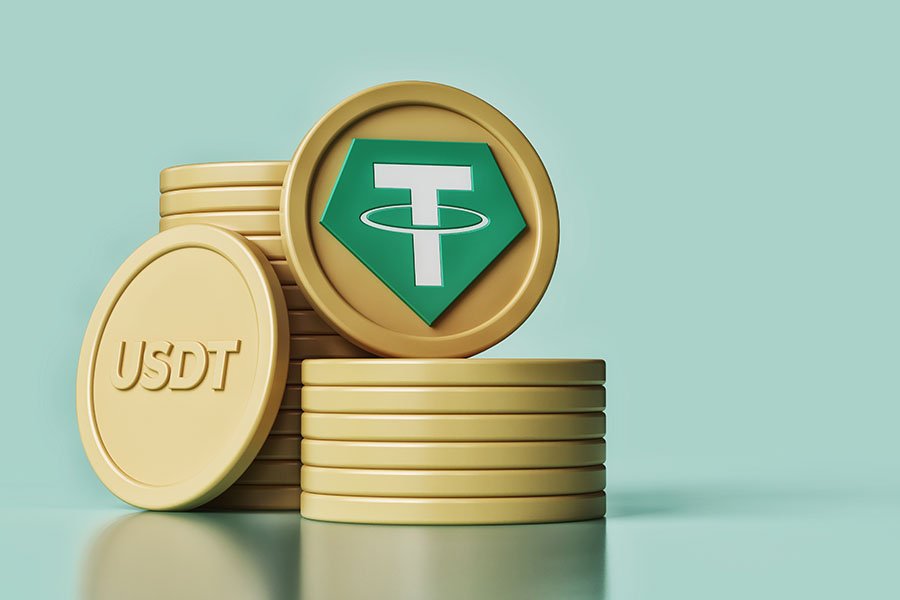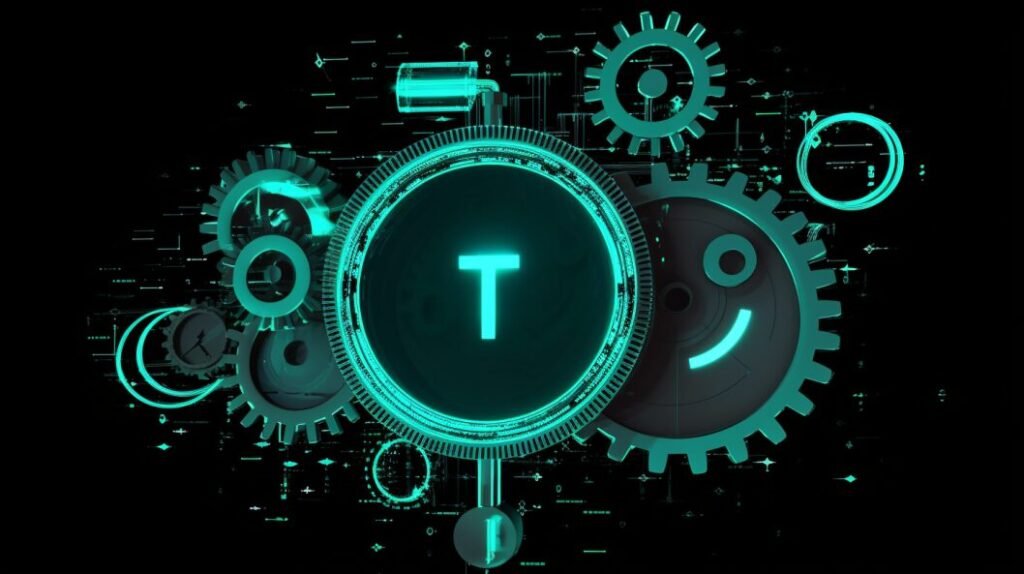
The goal of Tether (USDT) is to provide a less volatile digital currency by pegging its value to the US dollar at a certain ratio. USDT is one of the most widely accepted stablecoins, which are blockchain-based currencies pegged (or pegged) to fiat currencies.
Tether’s mission is to offer a safer digital asset that is not affected by market volatility in the same way as Bitcoin.
USDT is pegged to the US dollar; Theoretically, the idea is that 1 Tether can be exchanged for 1 US dollar regardless of market conditions
Tether faces competition from other stablecoins such as USDC, which is also pegged to the US dollar.
Tether, as a company, currently offers four stablecoins pegged to their respective currencies, including USDT, EURT, CNHT, and MXNT.
Tether price reached an all-time high of X euros on day X.
What is Tether?
Tether (USDT), launched in 2014, is one of the most popular stablecoins by volume. Unlike other cryptocurrencies such as Bitcoin, whose price tends to fluctuate more unpredictably, Tether attempts to maintain its value around a specific asset.
Tether was created as a digital token that can be used on blockchains. As one of the pioneers of the stablecoin concept, Tether offers stablecoins pegged to several different fiat currencies, including the US dollar (USDT), euro (EURT), Mexican peso (MXNT), and Chinese yuan (CNHT). as well as gold (XAUT). This digital currency technology makes cross-border payments easier as value is not necessarily lost in currency exchange.
How does Tether work?
Tether tokens are pegged to fiat currency at a ratio, meaning that theoretically 1 token is equivalent to 1 unit of that currency. The user can exchange fiat currency for Tether tokens by depositing the desired amount into the Tether reserve and receiving the equivalent in Tether (USDT). The peg is maintained by maintaining an amount of reserves equal in value to the US dollar and the US dollar in circulation.
Controversy surrounding claims to Tether reserves:
Although Tether now claims that each of its tokens is 100% backed by its reserves, which include traditional currencies, cash equivalents and “may include other assets and receivables from loans made by Tether to third parties,” at the time around this there were several controversies. Lack of transparency on Tether’s part regarding what exactly was included in these reserves and its business practices in general.
Regulators have looked into Tether’s claims that its tokens are fully backed by dollar reserves, and while Tether appears to be addressing these concerns on their Transparency page, where they keep a daily record of current total assets and a detailed breakdown of their reserves, some doubts remain.
Ironically, these past controversies have impacted the price of USDT, at one point falling to $0.88, a painfully blatant contradiction of Tether’s claims to keep the price of its tokens stable and free from external factors that tend to influence volatility market. .
How to buy Tether?
You can buy Tether through cryptocurrency exchanges like Bitpanda using fiat currencies like Euros or US Dollars. It is recommended that you first look at USDT price history and the current exchange rate. You will then have the option to keep your USDT or sell it again through an exchange.

Tether price history:
Although Tether claims that its tokens are not subject to the market volatility that typically affects cryptocurrencies, the price of USDT has experienced significant ups and downs during its existence. Therefore, as with any other cryptocurrency, it is important to do your research before investing and remember that there is no guaranteed price prediction for USDT.
Tether’s price fell sharply in mid-2017, reaching an all-time low of €0.80 in January 2018. Following the resolution of the controversy surrounding Tether’s business practices, the value of USDT slowly rose again, reaching €0.9 in the spring of 2020, before falling back to around €0.8 in 2021. The price has recovered again and currently maintains its target at around $1. USDT is currently trading at an average daily high of EUR 1.0218 and an average daily low of EUR 1.0129.
History of Bondage:
In November 2017, Tether reported the electronic theft of $31 million worth of USDT tokens. The company implemented a hard fork, a security technique that involves dividing the blockchain into two streams.
2019
In April 2019, New York Attorney General Letitia James obtained a court order prohibiting Tether and iFinex, BitFinex’s parent company, from further violating New York law. BitFinex was found to have borrowed at least $700 million from Tether reserves to offset BitFinex’s corporate and customer funds frozen (and ultimately seized) from its Panamanian banking partner Crypto Capital Corp. during a money laundering investigation.
Tether is a full member of the Blockchain Alliance, a coalition working to promote the development of blockchain and its legal uses.
2021
In February 2021, Tether and BitFinex settled the case, agreeing to pay an $18.5 million fine, suspend trading with any New York State resident or entity, and provide information about their reserves to the New York Attorney General’s Office for the next two years. .
In fact, “Tether had sufficient fiat reserves in its accounts to support USDT Tether tokens in circulation on only 27.6% of days over the 26-month period from 2016 to 2018,” the CFTC reports. Bitfinex agreed to pay a $1.5 million fine to resolve separate CFTC charges as part of a settlement.
2022
In May 2022, Tether’s price briefly dropped to $0.96 after TerraUSD (UST) was unpegged, even though it was not an affiliated issuer of Tether or BitFinex. The price of Tether tokens quickly recovered to above $0.99, and Tether said it continued to honor redemption requests at a 1-to-1 rate per US dollar.
Tether also launched MXNT, a stablecoin backed by the Mexican peso, following previous expansions in Europe (EURT) and China (CNHT).
2023
In 2023, Tether expanded into the artificial intelligence space with the acquisition of Northern Data Group.15 The company appointed a new CEO: Paolo Ardoino, a former CTO and a strong proponent of cryptocurrencies and blockchain-based financial solutions.
That same year, the long-running lawsuit against Tether and Bitfinex finally came to an end after Judge Laura Swain dismissed the lawsuit in November 2023.
The company also continued to take various measures to improve the security of cryptocurrencies, educate users and legislators, and cooperate with law enforcement agencies.